What is vitiligo?
Vitiligo is an autoimmune disease that triggers the destruction of melanocytes and turns the skin colorless. It is characterized by progressive loss of pigmentation and contrasting white patches on the skin. The white patches that characterize vitiligo are caused by the body's immune system attacking such cells. It can be localized in any body part, such as the face, hands, arms, or genital area. Although unclear, the cause of vitiligo is usually presumed to be genetic, environmental, or autoimmune. This type of illness can have a significant psychological effect, significantly influencing self-esteem and reducing quality of life.

Current Treatments for Vitiligo
Treatment options for vitiligo, such as topical steroids, UVB and PUVA light therapies, systemic drugs, and various surgical procedures, often come with drawbacks, including inconsistent results, bothersome side effects, and extensive treatment durations. Topical steroids and immunosuppressants cause skin atrophy and systemic risks, while light therapies require frequent sessions and lead to long-term risks. Contrasted with this, red light therapy is a non-invasive, pain-free methodology associated with no side effects.
How Can Red Light Therapy for Vitiligo Be Used?
Red light therapy as an emerging treatment for vitiligo has gained attention for its potential benefits in maintaining skin health and regeneration. This gentle, non-invasive treatment lends itself to addressing a spectrum of skin conditions, vitiligo included. The procedure typically involves exposing the skin to low-level red light with wavelengths of 630 to 850 nm. It has been purported to primarily work by stimulating cellular processes that lead to healing and re-pigmentation.
Skin Cell Absorption: The red light is absorbed into the mitochondria of the skin cell, where it creates energy for the cell in the form of ATP. Such increasing ATP production can, therefore, promote good cell function and repair.
Reduces Inflammation: One of the anti-inflammatory properties of red light is its ability to reduce the inflammatory response responsible for destroying the melanocytes in vitiligo.
Immune modulation: Red light therapy can modulate the immune response, slowing the progression of vitiligo and stopping further injury to melanocytes.
Melanocyte Renewal: Red light therapy may stimulate the renewal of melanocytes and lead to re-pigmentation in affected areas.

Emerging Research on Red Light Therapy for Vitiligo
Explorations into red light therapy's role in vitiligo care are burgeoning and hold promise for non-invasive management. With the growing body of research, red light therapy may prove a valuable addition to vitiligo treatments shortly by providing a non-invasive, effective option for patients. Preliminary studies indicate that low-level red light therapy application may benefit vitiligo by stimulating cellular processes and encouraging melanocyte regeneration to maintain the melanin pigment. Similar findings demonstrated that red light therapy in combination with other topical treatments further improves re-pigmentation and stabilizes the skin condition. Future prospective studies must determine optimal treatment parameters and establish long-term efficacy and safety data.
How Can Red Light Therapy for Vitiligo Be Used?
- Device Selection: For vitiligo treatment, choose a red light therapy device, such as LED panels or handheld units, emitting wavelengths between 630 and 850 nanometers.
- Application: The skin should be cleaned before. The distance between the skin and the device is usually a few inches, which allows this device's light to reach affected areas.
- Session Duration and Frequency: Adhere to the advised session length, typically ranging from 15-30 minutes per treatment area, repeated multiple times weekly, adjusting as needed for personal circumstances and specific device guidelines.
- Consistency: Regular use is important in getting any potential advantages since the process of re-pigmentation of skin can be very slow.
Precautions
Seek a dermatologist's advice before starting red light therapy to ensure its suitability for your condition and to receive a tailored treatment strategy. Prolonged exposure to red light can cause skin irritation. Follow the guidelines provided by the manufacturer and medical advice about treatment duration and frequency. Regularly check for adverse reactions like redness or irritation, ceasing use immediately if they occur. In case of concern, report it to a health professional. Ensure compatibility and avoid excessive overlapping when combining red light therapy with other treatments, such as topicals or other light therapies, to prevent skin damage. Protective goggles must be worn in case the devices could bring intense light to the eyes when near the face.
Conclusion
Treating vitiligo poses challenges, with current therapies offering varied effectiveness. While traditional treatments manage symptoms and offer cosmetic enhancement, they frequently come with drawbacks like variable outcomes, side effects, and significant time investments. Red light therapy devices may be an optimistic adjunct to existing treatments because of its potential to promote skin healing, decrease inflammation, and probably induce melanocyte regeneration. While preliminary research results of red light therapy are promising, consistent use under professional guidance is essential.
References
[1] Winkie MJ, Sakunchotpanit G, Salazar CE, Gunasekera NS, Buzney EA, Nambudiri VE. A focused review of visible light therapies for vitiligo. Photodermatol Photoimmunol Photomed. 2024 Jan;40(1):e12939. https://pubmed.ncbi.nlm.nih.gov/38084061/
[2] Yu S, Lan CE, Yu HS. Mechanisms of repigmentation induced by photobiomodulation therapy in vitiligo. Exp Dermatol. 2019 Feb;28 Suppl 1:10-14. https://pubmed.ncbi.nlm.nih.gov/30698884/
[3] Avci P, Gupta A, Sadasivam M, Vecchio D, Pam Z, Pam N, Hamblin MR. Low-level laser (light) therapy (LLLT) in skin: stimulating, healing, restoring. Semin Cutan Med Surg. 2013 Mar;32(1):41-52. https://pubmed.ncbi.nlm.nih.gov/24049929/
Read More
- Red Light Therapy| Improve Sleep & Wellness – BESTQOOL
- Red Light Therapy | Unlock Wellness & Beauty Benefits – BESTQOOL
- Red Light Therapy Dosing Guide – BESTQOOL
- Red Light Therapy for Newborn Sleep | Enhance Baby's Rest – BESTQOOL
- Immune Resilience: Red Light Therapy's Potential in Boosting Immunity – BESTQOOL



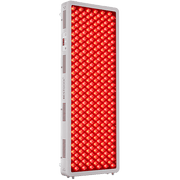









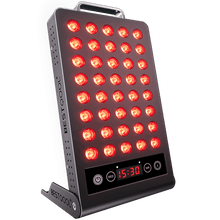
 Small
Small
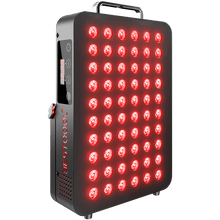
 Moderate
Moderate
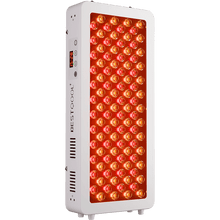
 Moderate
Moderate
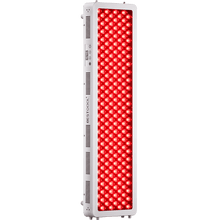
 Moderate
Moderate
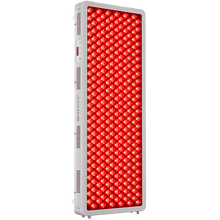
 Full
Full



